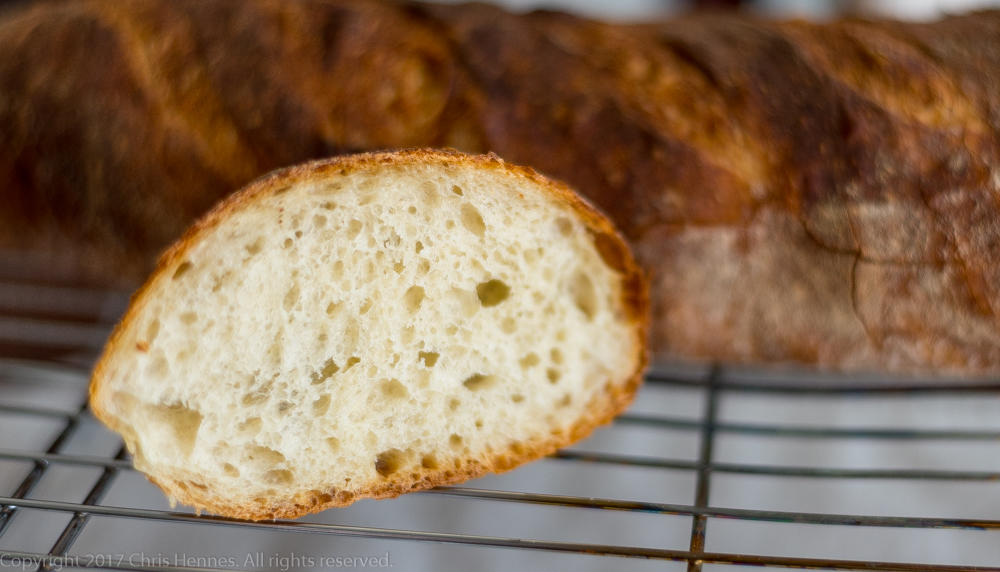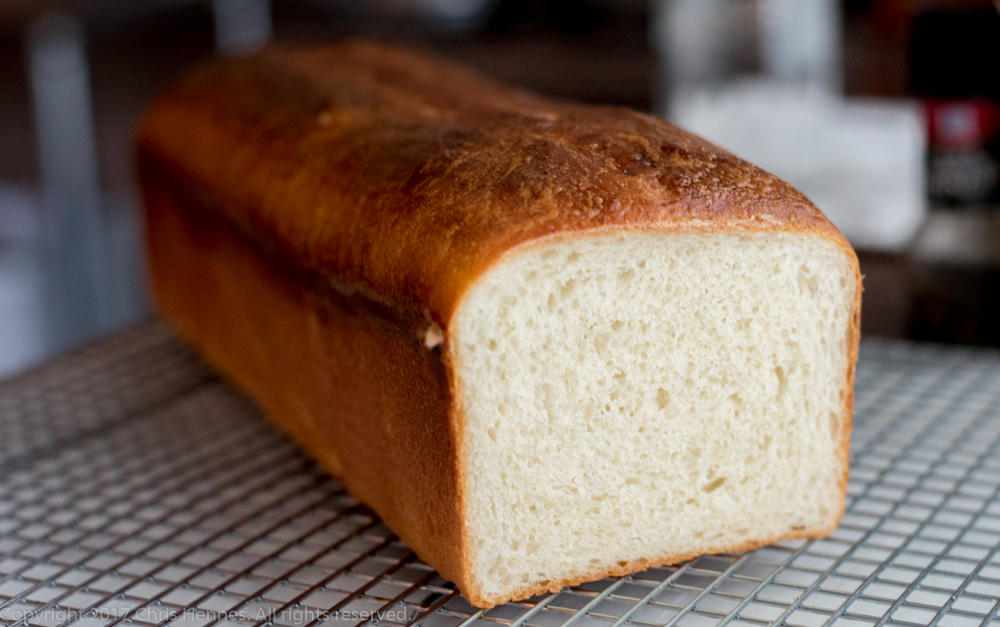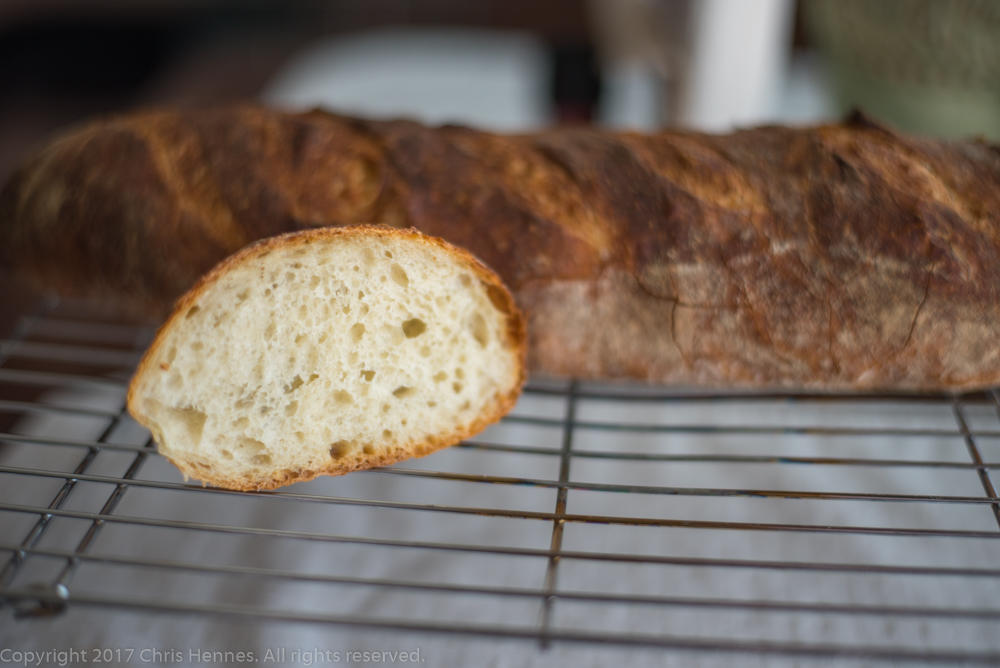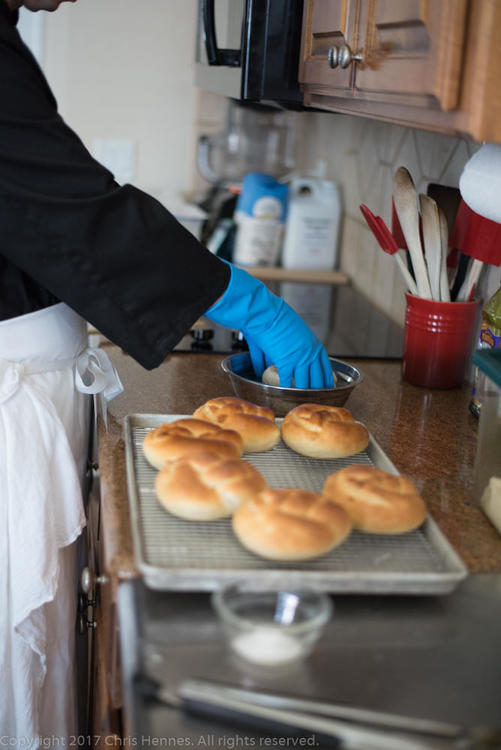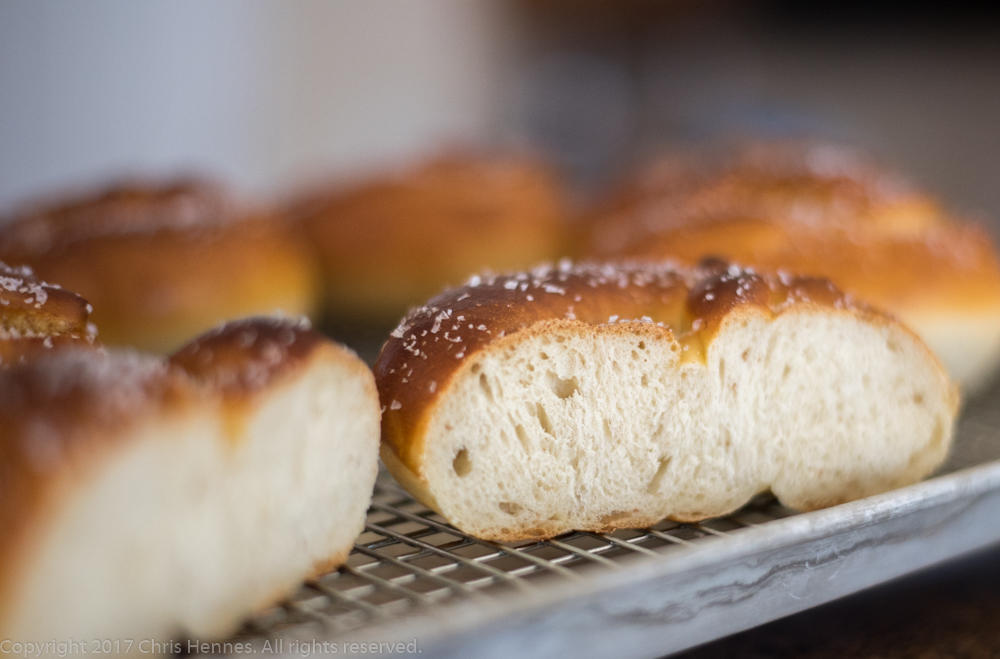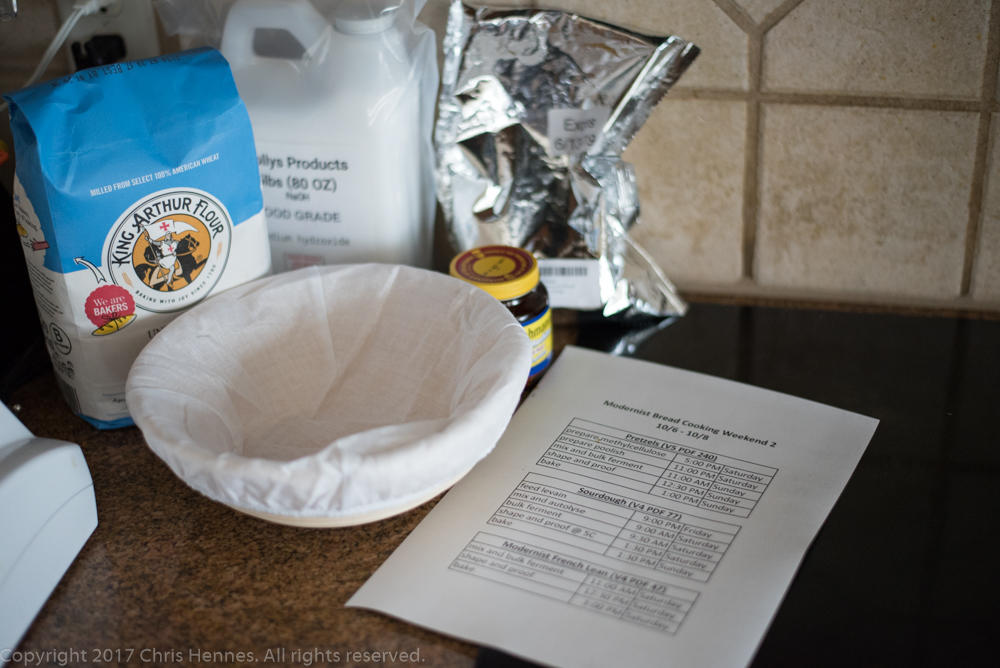-
Posts
10,190 -
Joined
-
Last visited
Content Type
Profiles
Forums
Store
Help Articles
Everything posted by Chris Hennes
-
Oh cool, thanks, @Lisa Shock, I had never seen that discussion.
-
Just a follow-up to Kerry's comment about flying in: the Buffalo airport is small and easy to navigate, and the border crossing there was pretty painless last time I went to the Workshop in Niagara. Alas, I can't make it this year (or really any year in May, unfortunately).
-
Other than it being a sourdough it is straightforward.
-
I'm not sure I've ever had kimchi I didn't like, and the brand I typically buy is a local one, but I see that Serious Eats did a taste test a few years ago that might be relevant. What brands are available where you live?
-
Fundamentally I think it's because the upper loaf is underproofed. But it's not the folding (which happens during the bulk fermentation phase) that gives the spiral, it's the shaping (which happens after).
-
Without fat, and with white wheat flour.
-
I’ve never heard of waxed salt — do you mean for the pretzels? I didn’t have the right salt, so I just used the coarsest sea salt in my drawer.
-
They provide a table of common pan sizes and recipe scalings and cooking times and temps.
-
It’s a 1kg loaf in a 13”x4”x4” (sorry for the mixed units!)
-
A few more comments... Last weekend I made the first master recipe in the book, the French Lean Bread. The book's presentation of this topic is really interesting. They spend several pages in volume 4 comparing recipes from various bakers, showing gorgeous (and informative) cross-sections of the resulting loaves, tables comparing hydrations, salt content, yeast content, fermentation time, and which pre-ferment is used. There is a huge spread between what various world-renowned bakers consider their basic loaf. The baseline recipe they choose to include in the book under the heading French Lean Bread is a 68% hydration loaf made with a 12-hour poolish pre-ferment (100% hydration, no salt), 2% salt, and 0.5% commercial yeast. Their main innovation is the lack of a kneading process, replacing it instead with a longer, slower folding process. In bread, of course, slower is often desirable, and in this case it results in a terrific loaf. For reference, I made it entirely by hand, though they do include several machine-mixed variations. I formed it into small 500g boules. Cross-section: This weekend I the returned to French Lean Bread, but made the Modernist variation on it. This is actually a direct loaf, with no pre-ferment at all (unusual for this book). It includes a polydextrose to make the crust crispier and a very small amount of vegetable shortening (1%) to increase loaf volume. Its main "Modernist" innovation is the almost complete elimination of the autolyse and the kneading by vacuum sealing the dough for 30s. I found that to achieve full hydration in my Food Saver I had to run the cycle five times, which resulted in about a minute of whatever level of vacuum I can achieve in those bags. But it did actually work, and resulted in a dough that was ready to bake very quickly. Start to finish this recipe probably took four hours or so, and resulted in the finest loaf of French lean bread I've ever made. I can't wait to try the A+ variation on the next page. I formed it into small 500g bâtards. Cross section:
-
A few shots from this weekend's baking extravaganza (testing recipes from Modernist Bread): White sandwich bread Modernist French Lean Bread And from last weekend, the non-Modernist version of the French Lean bread, this time in video form because the sounds of fresh bread are fun:
-
I think it would work on an industrial scale, but at home I'd really (really, really) hate to have aerosolized lye floating around. I don't mean to make a mountain out of a molehill here, the fix is pretty easy (either flip the pretzels in the lye, or push them down). But by following the directions to the letter I think the Modernist variation throws things out of whack by being significantly less dense than the traditional one. Maybe a more experienced pretzel-maker than myself, which is pretty much everyone who has ever made a pretzel, would have simply compensated on the fly. Alas, I did not. Fortunately, the results are perfectly edible, just not as gorgeous as they ought to be.
-
I should clarify the nomenclature here: they actually present two recipes, one "normal" and one "Modernist". Both recipes use the new par-baking technique. The Modernist one includes Methylcellulose F50 (to set the rise to its maximum) and L Cysteine, to make the dough easier to shape.
-
The problem they are trying to solve is the partial deflation of the dough due to over-handling when you dip them raw. I've never worked with a lye solution until today, but I have to tell you I am grateful the pretzels were already baked. The lye adds enough stress to the occasion without the need for worrying about deforming and deflating pretzels. And the technique works just fine, giving the pretzels their characteristic color and smell. In my book it's a clear improvement that, as with everything, requires a bit of practice to really hone into a functional technique.
-
I got to go full Mad Scientist this afternoon: As I mentioned above, their pretzel technique involves par-baking and then dipping in lye, followed by a quick finish in the oven. This almost worked well today, but the instructions clearly say to not immerse the pretzels, but only float them in the lye. However, with the Modernist variation, the pretzels are too light and don't sink far enough into the lye, leading to a pretzel that literally looks half-baked. The additional methylcellulose does its job very well, and you get a great internal texture on the pretzels, but I think you need to push them down into the lye a bit to really get them well-coated.
-
Yes, they have a recipe for Banh Mi Rolls (page 4-53), but I don't recall seeing anything Singaporean, and the index doesn't list anything for Singapore.
-
I’m finding that one of the more frustrating things about this book is that it is requiring quite a lot of self-control on my part. There are just so many things I want to try from it. This afternoon I’m making a plain white sandwich bread, but in reading that section of the book they introduce a new “two step” technique for adding entire other doughs as inclusions into it, which of course now I want to try right away! But I feel like I should at least try the basic recipe once before going adventuring. This book does an excellent job of making you feel like you can create any bread you want.
-
Anyone else getting ready for a baking frenzy this weekend? It's almost actually autumn-like weather here, and I've got a massive pile of new recipes to try...
-
No, in fact they dedicated a page to explaining why not! They drew the line at brioche, deciding that everything beyond that was not bread-like enough to fit into this book. Personally I think there's room for a companion volume or two on things like Viennoiserie and chemically-leavened breads. Maybe next year .
-
I just read the intro to pretzels, and it sounds like what they are doing is baking the pretzels enough to firm them up so the don't degas during handling, then a quick dip in the lye solution, and then back into the oven for the final browning. They tested boiling in the lye, but in addition to the corrosive fumes this creates, apparently it didn't improve the pretzels.
-
I was idly chatting with a pretzel-making friend of mine last night (I've never made real pretzels, where you dip them in lye). I was sort of abstractly aware that you conventionally dip the pretzels in the lye solution prior to baking them, and had noticed that in Modernist Bread they actually reverse the order. They have you bake the pretzels first, then dip them, then do a sort of re-heat step. My friend was blown away by this idea, which I hadn't realized was quite so unusual. I guess I need to actually read the pretzel section of the book now. Has anyone else ever heard of this idea?
-
Are you using a citrus vodka there, or unflavored?
-
They still advocate the use of the steel for its heat transfer properties, but they argue that if you optimize the hydration of the dough for 550F instead of 900F you can achieve a superior (in their opinion) pizza. But of course, they are nothing if not thorough and do include information on working at higher temperatures should that be your preference.
-
Oh yes: very much yes. They bought a scanning electron microscope so they could actually "see" what was happening! They do indeed discuss the impact of geographical differences (which as @Kerry Beal suggests are present, but not typically a key flavor factor compared to the many other details involved). Sourdough is the reason I pre-ordered this a year ago, and I have not been disappointed. I started my first MB-based levain this past weekend, and will start baking with it this upcoming weekend, if all goes well. As you might expect, they were quite thorough in their debunking of various methods of "accelerating" a starter, etc. There are literally two ingredients in their levain, flour and water. What ratio (and what flour) you choose impacts how it develops, and they discuss those details in depth.
-
Oh yes, a ton of information about pizza, covering several different styles (Neapolitan, New York, and Sicilian). From the book, though: Spoiler alert: they prefer pizza baked at lower temperatures than you do, if I recall previous discussions correctly . That said, of course there is a big parametric table comparing the results for various time/temp combinations so you can make your own decision.






